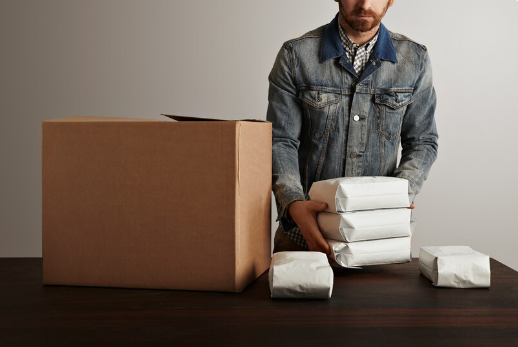Where to Buy Reliable Packaging Supplies in Australia for Your Small Business

Rethinking Packaging in the Age of Sustainability
The shift toward eco-conscious business practices has fundamentally changed the way companies view packaging. It’s no longer enough for packaging to be functional—it must also reflect a brand’s values and commitment to environmental responsibility. For businesses operating in Australia, the need to source reliable, eco-friendly packaging supplies Australia wide is more urgent than ever. This guide explores how to select the right materials, where to find suppliers, and how small packaging boxes are reshaping sustainable commerce across the country.
Why Sustainable Packaging Matters to Australian Businesses
Changing Consumer Expectations
Australian consumers are increasingly prioritising sustainability in their purchasing decisions. From biodegradable mailers to recyclable cartons, packaging is seen as a key indicator of a brand’s environmental ethics. Businesses that invest in eco-conscious solutions gain a competitive edge, higher brand trust, and stronger customer loyalty.
Regulatory Compliance
With strict government regulations around packaging waste and single-use plastics, sourcing sustainable packaging supplies Australia is also about staying compliant. Brands must meet national guidelines such as the Australian Packaging Covenant Organisation (APCO) framework, making responsible sourcing a legal necessity.
Understanding Sustainable Packaging Materials
Recyclable Paperboard and Cardboard
The most common eco option for small packaging boxes, recycled cardboard reduces landfill impact and is widely available across Australia. Suppliers often offer FSC-certified variants to guarantee responsible sourcing.
Compostable Films and Mailers
Compostable materials made from cornstarch, PLA, or other plant-based polymers are rapidly replacing traditional plastic mailers. These break down naturally, leaving no harmful residue behind.
Kraft Paper and Corrugated Options
Kraft is a sturdy, biodegradable material ideal for wrapping and internal fillers. Corrugated kraft boxes combine strength with sustainability, offering protection without excess weight.
Water-Based Inks and Adhesives
True sustainable packaging extends beyond the box. Look for suppliers using water-based inks and glue that won’t compromise recyclability.
Types of Eco-Friendly Packaging Supplies Australia Brands Are Using
Small Packaging Boxes
Ideal for jewellery, cosmetics, electronics accessories, and gift items, small packaging boxes are compact, efficient, and easily customised. Eco versions come in kraft, recycled paperboard, or sugarcane pulp.
Paper Mailing Bags
Suitable for soft goods like apparel, paper mailers are recyclable and lightweight. They replace plastic satchels while still providing strong performance during transit.
Custom Tissue and Wrapping Paper
Eco-friendly tissue paper made from recycled pulp adds a premium touch to packaging without the environmental guilt. When paired with soy-based ink branding, it becomes a subtle yet impactful branding tool.
Biodegradable Fillers and Void Fill
Packaging peanuts, crinkle paper, and inflated pillow packs now come in biodegradable versions. These provide the necessary protection while aligning with green objectives.
How to Choose the Right Small Packaging Boxes for Your Product
Match Product Weight and Fragility
Not all eco boxes are created equal. For heavier or fragile products, double-walled corrugated kraft boxes offer more strength. Lightweight items can go in single-wall small packaging boxes with minimal padding.
Branding Compatibility
Choose a material that complements your visual identity. Kraft has a rustic, natural aesthetic, while bleached recycled board suits minimalist or luxury branding.
Closure and Protection Options
Look for boxes with built-in tabs, magnetic flaps, or tuck-in closures that eliminate the need for plastic tape or external adhesives.
Where to Find Sustainable Packaging Supplies in Australia
Local Packaging Manufacturers
Buying from Australian manufacturers not only supports the local economy but also reduces carbon emissions associated with international shipping. Look for partners in Melbourne, Sydney, Brisbane, or Perth with transparent sustainability credentials.
Certified Suppliers
Work with suppliers certified under:
- FSC (Forest Stewardship Council)
- PEFC (Programme for the Endorsement of Forest Certification)
- AS 5810 (Australian Standard for home compostability)
Online Marketplaces with Eco Filters
Several B2B platforms now offer filters for “eco-friendly” or “sustainable” packaging. Use these tools to narrow down to compliant suppliers.
Evaluating a Supplier’s Sustainability Credentials
Ask the Right Questions
- Are your materials certified?
- Do you use renewable energy in manufacturing?
- Can you provide LCA (Life Cycle Assessment) data?
- What’s your MOQ for eco packaging?
Review Packaging Impact Statements
Leading suppliers will provide data or certifications outlining the environmental impact of their products. If a supplier can’t back up their green claims, it’s a red flag.
Customising Eco Packaging Without Compromising Sustainability
Printed Branding Options
Digital printing with soy or water-based inks is ideal for branding small packaging boxes. Avoid heavy foil stamping or plastic lamination, which can hinder recyclability.
Embossing and Debossing
These techniques add texture and brand visibility without the need for ink, making them a low-impact customisation option.
Reusable Design Features
Incorporate easy-to-open closures, tuck-in flaps, and branded sleeves to encourage customers to repurpose the packaging instead of discarding it.
Cost Considerations When Switching to Eco Packaging
Long-Term Savings
While sustainable materials may cost more upfront, they reduce costs over time through:
- Lower shipping weight
- Better customer retention
- Fewer environmental levies or fines
- Opportunities for bulk discounts
Tiered Investment Strategies
Start small—switch your small packaging boxes to recycled paperboard, then expand into compostable mailers and printed tissue as your budget allows.
Shipping and Fulfillment Considerations
Compatibility with Eco Friendly Mailers
Pair your small packaging boxes with compostable mailers or recyclable satchels for added protection. Ensure the entire packaging chain is aligned for best results.
Sustainable Void Fill Options
Avoid plastic bubble wrap. Use shredded kraft, corrugated wrap, or biodegradable peanuts that break down in landfill or compost.
Warehouse Optimisation
Eco boxes that ship flat and assemble easily save time and space in warehouses. Ask suppliers for folding samples to test workflow compatibility.
Consumer Education and Brand Messaging
Include Clear Disposal Instructions
Let customers know how to recycle, compost, or reuse your packaging. Use icons or short text on the bottom of the box or inside lid.
Promote Your Packaging Commitment
Leverage social media, email newsletters, and product pages to highlight your use of sustainable packaging supplies Australia. Add a “packaged responsibly” badge to your site or print.
Encourage Sharing and Reuse
Design your boxes and bags to be visually appealing even after first use. Encourage customers to repurpose or gift them forward.
Conclusion
Switching to sustainable packaging supplies Australia businesses can depend on is no longer just a trend—it’s a strategic necessity. With a growing emphasis on environmental responsibility, using small packaging boxes made from recyclable, biodegradable, or compostable materials helps brands meet customer expectations, comply with regulations, and build long-term loyalty. The key lies in choosing the right materials, asking the right questions, and aligning your supply chain from manufacturing to delivery.
Frequently Asked Questions (FAQs)
1. What is the most sustainable type of small packaging box?
Boxes made from FSC-certified recycled cardboard or kraft paper are considered the most sustainable, especially when free of plastic coatings.
2. Can I print on eco-friendly packaging without compromising recyclability?
Yes. Use water-based or soy-based inks, and avoid plastic laminates or heavy metallic foils.
3. Are there compostable small packaging boxes available in Australia?
Yes. Some suppliers offer boxes made from sugarcane pulp or PLA blends that meet AS 5810 standards.
4. Where can I find verified eco packaging suppliers in Australia?
Look for local manufacturers in major cities and check for certifications like FSC, PEFC, or APCO membership.
5. Do eco friendly mailers protect items during shipping?
Absolutely. Compostable or recyclable mailers are designed to be water-resistant and tear-proof, often with padded options available.
6. What’s the MOQ for sustainable packaging orders?
Minimum order quantities vary, but many Australian suppliers offer MOQs as low as 250–500 units for small businesses.
7. How can I reduce the cost of switching to sustainable packaging?
Start with high-impact areas like switching to eco small packaging boxes, buy in bulk, and partner with suppliers offering scaled pricing.
8. Are there tax incentives for using eco-friendly packaging in Australia?
Some state-based programs and grants support sustainable business practices. Check with your local government or business chamber.
9. Can customers recycle all parts of the packaging?
If designed properly—yes. Ensure all components are curbside recyclable or home compostable and clearly labelled.
10. How can I tell if a supplier’s eco claims are real?
Ask for documentation, look for third-party certifications, and check if their products meet Australian or global sustainability standards.





